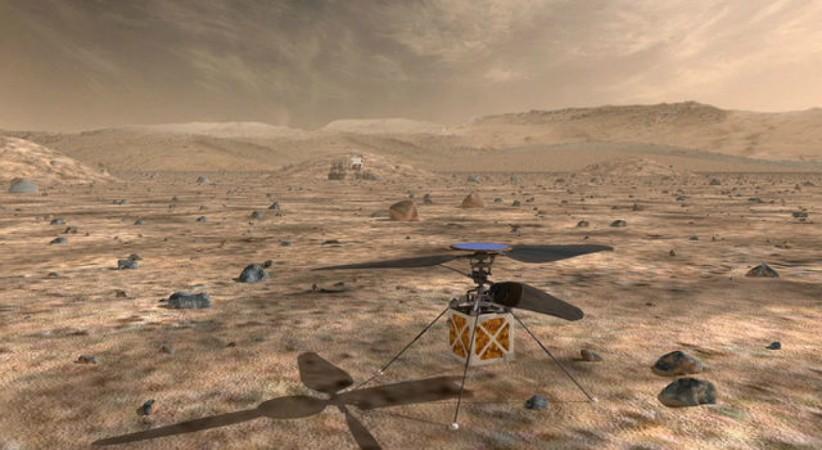
NASA will send a small autonomous flying machine to survey the Martian landscape in their 2020 mission along with their new rover. The robot will give scientists a bird's eye view of the surface of the red planet. The vehicle will be called "Mars Helicopter".
The helicopter will ride with the rover attached to its underbelly, notes the report. Once on Mars, the rover will deploy it on a suitable surface and drive away where it will have to unpack itself and attempt a flight. It will also have to be completely autonomous because commands take a long time to reach Mars from Earth. Mars is about 20 light minutes away from Earth.
If it can take flight, it will make five trips over a month's time each flight lasting about 90 seconds
NASA has been working out ways to make the Helicopter as light as possible. On Earth, notes the report, the highest any helicopter has flown is around 40,000 feet and the air gets really thin at those altitudes. On Mars, however, the atmosphere at the surface is comparable to the Earth's atmosphere at 100,000 feet. Final design for the aircraft puts it at 1.8 kg on Earth and is about the size of a football. It also has twin blades spinning ten times as fast as an average helicopter at 3,000 rpm.
The chopper will also test Martian aerodynamics to see if it is actually possible to have machines levitate in a planet where the atmosphere is about 100 times thinner than Earth's, reports the Verge. NASA's Jet Propulsion Laboratory has been working on the helicopter for over four years, but they were on the fence about actually sending it to Mars, but they have now made the decision to make it a part of the 2020 mission. There were budget and technical feasibility hurdles that kept the space agency from making the decision, but the robot will be officially be going to Mars.
In case Mars Helicopter fails to fly, the overall mission is not at a loss, notes the report. The main target of the upcoming mission is to replace the aging Curiosity rover with the new 2020 rover. However, should the Helicopter actually take flight, its on board cameras will give scientists a clear, view of the surface and make it possible to scout locations on the planet like never before. Also, if the robot does indeed take flight, NASA could build more flying machines for future missions. Flying through parts of Mars will make a lot easier to survey the planet because rovers are not really designed to move fast. In fact since landing on Mars in 2012, Curiosity has only covered about 18.3 km.
"NASA has a proud history of firsts," said NASA Administrator Jim Bridenstine. "The idea of a helicopter flying the skies of another planet is thrilling. The Mars Helicopter holds much promise for our future science, discovery, and exploration missions to Mars."

















